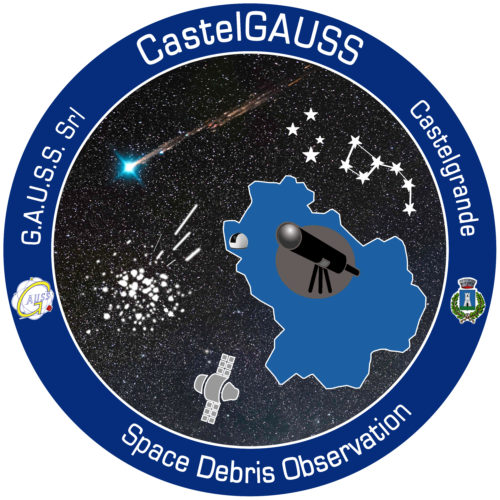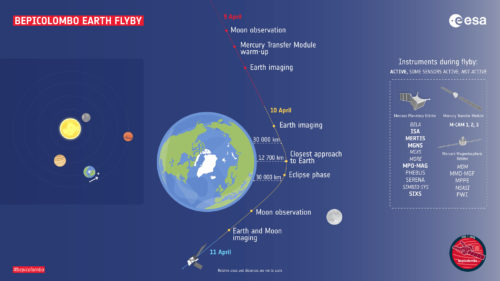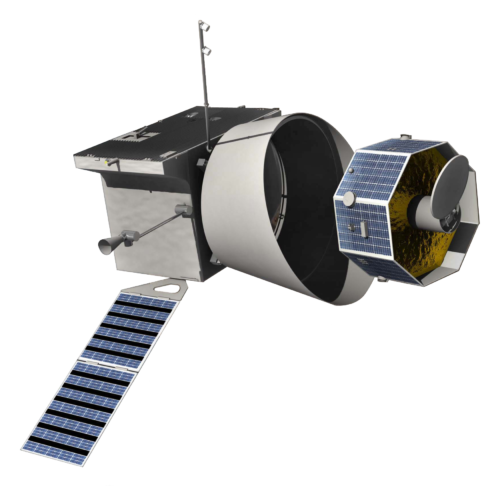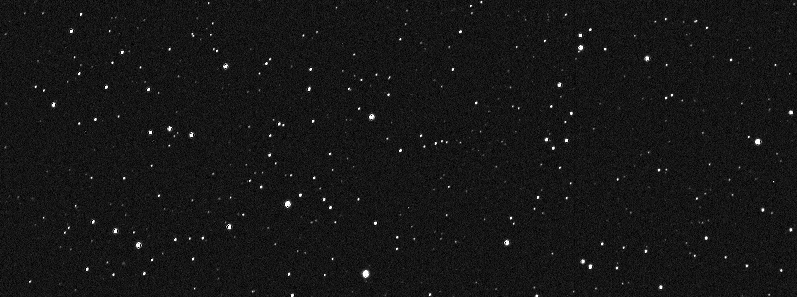
CastelGAUSS Observatory Logo
CastelGAUSS Observatory has been employed to track the BepiColombo spacecraft, during its gravitational slingshot around Earth.
CatelGAUSS project is GAUSS‘ remote observatory for space objects, created, managed and operated by GAUSS, with an administrative and scientific cooperation involving KIAM and the Municipality of Castelgrande.
The slingshot (the first of nine) was used to bend BepiColombo’s trajectory towards Venus, for a first encounter on October 2020.
A second close-encounter to Venus is scheduled for August 2021, then the journey will continue to its main scientific target, Mercury.

The BepiColombo Maneuver around Earth (credits: ESA)
Several fly-bys of Mercury will modify BepiColombo’s trajectory, in order to achieve a stable final orbit around Mercury on December 5th, 2025.
Since Mercury is so near to the Sun, the energy involved in the transfer to an orbit around this planet will be substantial, thus so many gravitational slingshots are required.
BepiColombo houses two main modules: the Mercury Planetary Orbiter (MPM) of the European Space Agency (ESA) and Mercury Magnetospheric Orbiter (MIO) of the Japan Aerospace Exploration Agency (JAXA), integrated in a Mercury Transfer Module (MTM) manufactured by ESA.

The BepiColombo Spacecraft (credits: NASA ScienceDirect)
These modules integrate several ESA and JAXA sensors that will be used to study Mercury, and some of these sensors have been tested during the April 10th slingshot around Earth.
GAUSS received requests by the Italian Space Agency and the European Space Agency to track the ESA spacecraft by using GAUSS’ CastelGAUSS Observatory, and BepiColombo’s accurate ephemerides have been provided by ESA-ESOC, in order to pinpoint the spacecraft in the sky.
On April 10th, 2020, BepiColombo has arrived at its nearest point around Earth, a distance of 12700 km.
CastelGAUSS observatory was then able to gather images of the spacecraft during the maneuver, and the imaging session took place on April 10th, from 8:25PM CET to 0:15AM CET.
180 good-quality pictures were retrieved, from which the following GIF animated image has been created: it is a sequence of 49 images taken from 8:59:27PM to 10:18:30PM CET, and the spacecraft is seen passing from North-East of the image to South-West.

The animation of 49 images taken by CastelGAUSS Observatory during the slingshot around Earth (credits: GAUSS)
The jumps in the animation are just pauses between observations of some minutes.
The celestial background is fixed as the telescope mount is commanded to counter-balance Earth rotation, making the sky look still in the picture.
Moving dots are orbiting objects.
This observation has been used as another source to check whether the slingshot maneuver around Earth was successfully achieved.
The image clearly shows also the myriad of orbiting objects around Earth (proper space debris and active satellites) that CastelGAUSS Observatory is able to detect.
Our algorithms, when required, are then able to discriminate whether an object is known (it is already included in a public database) or it is a newly-found debris.
As for this event, we are glad to recognize how CastelGAUSS observatory can be employed for tasks not related to research on space debris, but as a valuable support for main international and scientific missions.
More info about BepiColombo mission:
http://www.esa.int/Science_Exploration/Space_Science/BepiColombo/ESA_to_conduct_BepiColombo_flyby_amid_coronavirus_crisis
https://www.esa.int/Science_Exploration/Space_Science/BepiColombo
